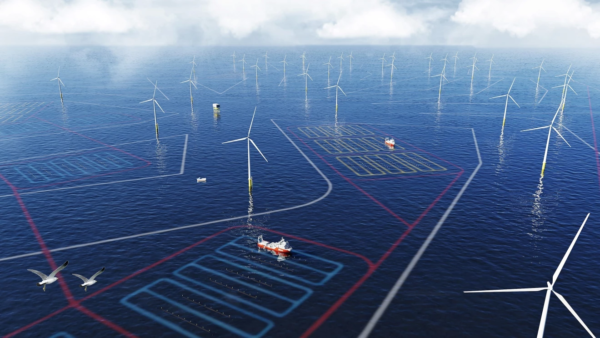Amazon is funding the world’s first commercial-scale seaweed farm located between offshore wind turbines. The project, North Sea Farm 1, will be located in a wind farm off the coast of the Netherlands, designed to test and improve methods of seaweed farming, while researching the potential of seaweed to sequester carbon.
The project is managed by a consortium of scientific researchers and partners from the seaweed industry, led by non-profit organisation North Sea Farmers (NSF), and is expected to become operational by the end of this year. The consortium hopes that North Sea Farm 1 will evolve into a blueprint for offshore seaweed farming the world over.
Amazon is granting €1.5 million to create this first-of-its-kind seaweed farm and carry out a year’s scientific research into carbon reduction through seaweed farming. The funding comes from its $100 million global Right Now Climate Fund.
10-hectare seaweed farm
North Sea Farm 1 aims to kickstart innovation in offshore seaweed farming. The grant will provide the investment required to construct a 10-hectare seaweed farm, which is expected to produce at least 6,000kg of fresh seaweed in its first year.
“Seaweed could be a key tool in removing carbon dioxide from the atmosphere, yet it’s currently farmed at a relatively small scale in Europe,” said Zak Watts, Director EU Sustainability at Amazon. “We’re delighted to fund this project to help us reach a greater understanding of its ability to help fight climate change.”
The evolution of farming in the North Sea
As part of the €1.5 million (£1.3m) project a team of scientists from Plymouth Marine Laboratory (PML) is seeking to establish the role offshore seaweed farming could play in capturing and storing carbon.
Senior Marine and Climate Change Ecologist at PML Dr Ana Queiros who is leading the research said: “The carbon dioxide removal potential of the seaweed industry remains unproven and the challenge is to understand how seaweed can be used for carbon sequestration over the long term.
“There is a lot of interest in the growth of the industry but we need to have the evidence to determine the genuine blue carbon value of these habitats.”
Further information can be read at EnergyLiveNews, North Sea Farmers, The Fish Site and Amazon.

No Comment